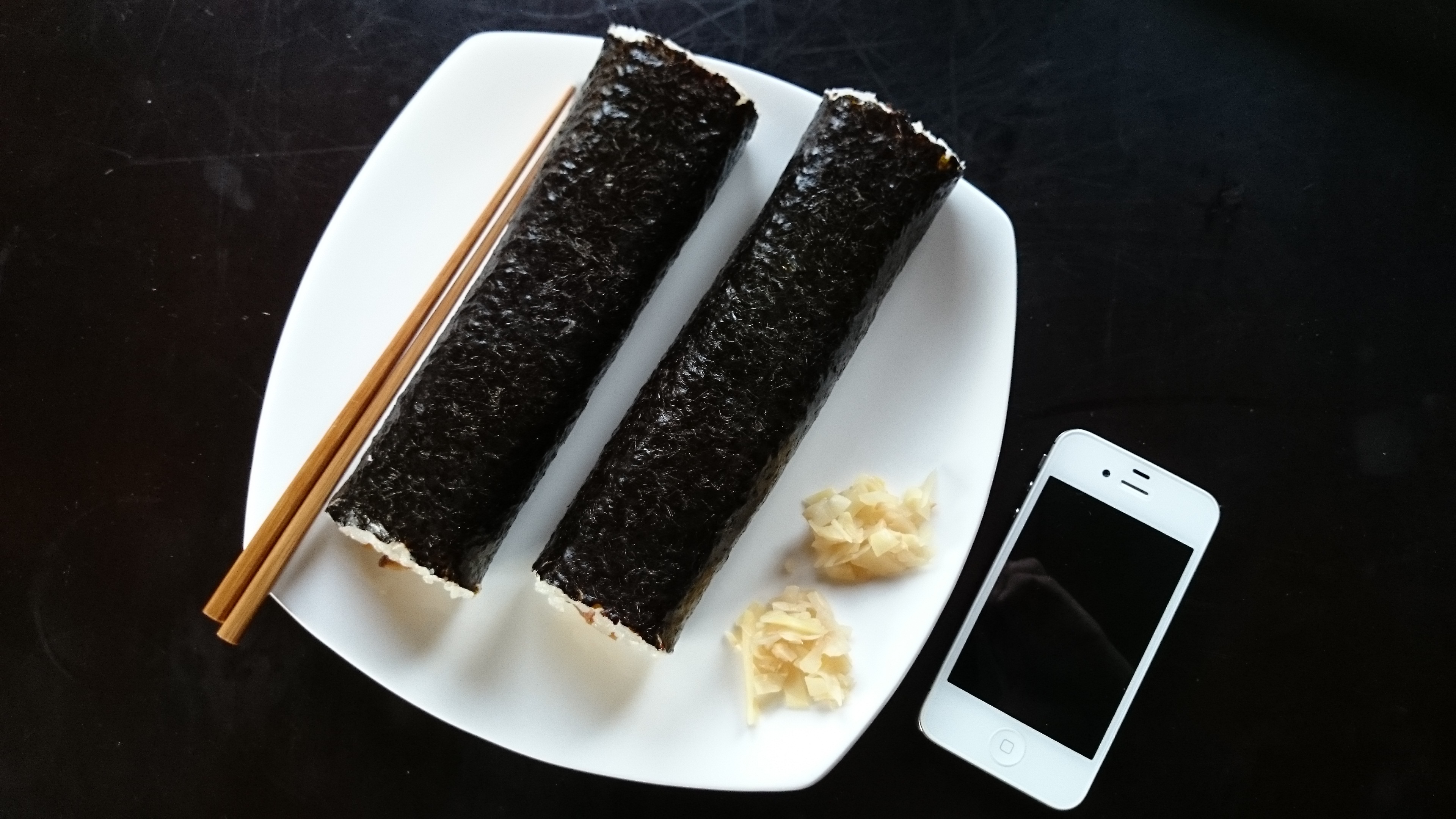
When you really think about them, even the traditions and practices that we each grew up with and seem perfectly normal are kind of odd. Easter, once solely the Christian celebration of the resurrection of Jesus, now sees us telling children that a benevolent rabbit came in the night to leave them chocolate eggs. Christmas takes us even further into the world of fantasy as kids grow up thinking that a magical man who lives in the North Pole works a team of elves all year round to make presents for them, delivering said gifts across the world in a single night via flying woodland beasts, despite the man himself likely having respiratory problems owing to his XXL frame.
Although Japan doesn’t really do Christmas, it does have a plenty of its own traditions and yearly celebrations, and it just so happens that today is one of them. Setsubun, or the spring bean-throwing festival, sees children yelling at and peppering fictional demons with handfuls of roasted beans, and families sitting down to eat enormous pieces of maki, or roll, sushi, often adhering to peculiar local traditions as they do.
Setsubun (written 節分) is the day on which Japanese people traditionally welcome in a fresh new year following the cold winter. It may still be incredibly chilly in most of Japan, but every February 3, families force the “demons” out of their home and wish for good luck as spring approaches.
Traditionally, the eldest male member of the household will throw a handful of roasted soybeans, called fuku mame, (meaning “lucky beans”) out of the front door of the house, as if to symbolise chasing away a demon, or oni. Whenever there are children in the house, however, more often than not someone – usually poor old Dad – has to don an oni mask and dance around menacingly while the kids throw the beans at him and shout 鬼は外!福は内! (Oni wa soto! Fuku wa uchi), meaning “Demons out! Good luck in!”
▼ It’s not easy being an oni!
Image: Harbord Japanese Culture Club
Of course, some little people take the business of driving out demons more seriously than others. One Twitter user in Japan, for instance, yesterday commented that they returned home to find their young daughter “training” for today’s bean throwing, using a makeshift demon for target practice.
▼ Give those demons hell, kid!
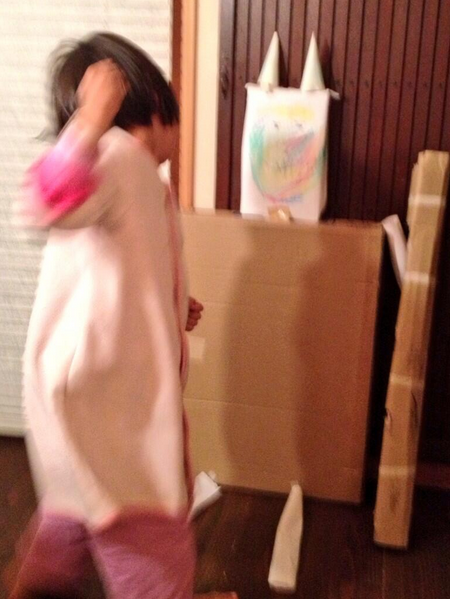
With the throwing finished, it’s time to get down to the bit that even the adults in the house usually look forward to: eating. Ehoumaki, written 恵方巻き (lit. blessing, way/direction, roll), are huge sushi rolls that traditionally contain seven ingredients (seven being a lucky number), and are thought to originate from Osaka and the greater Kansai region. The rolls were once more commonly known simply as marukaburi zushi, with maru meaning “in one” or “whole”, and kaburi denoting the process of eating in huge great mouthfuls.
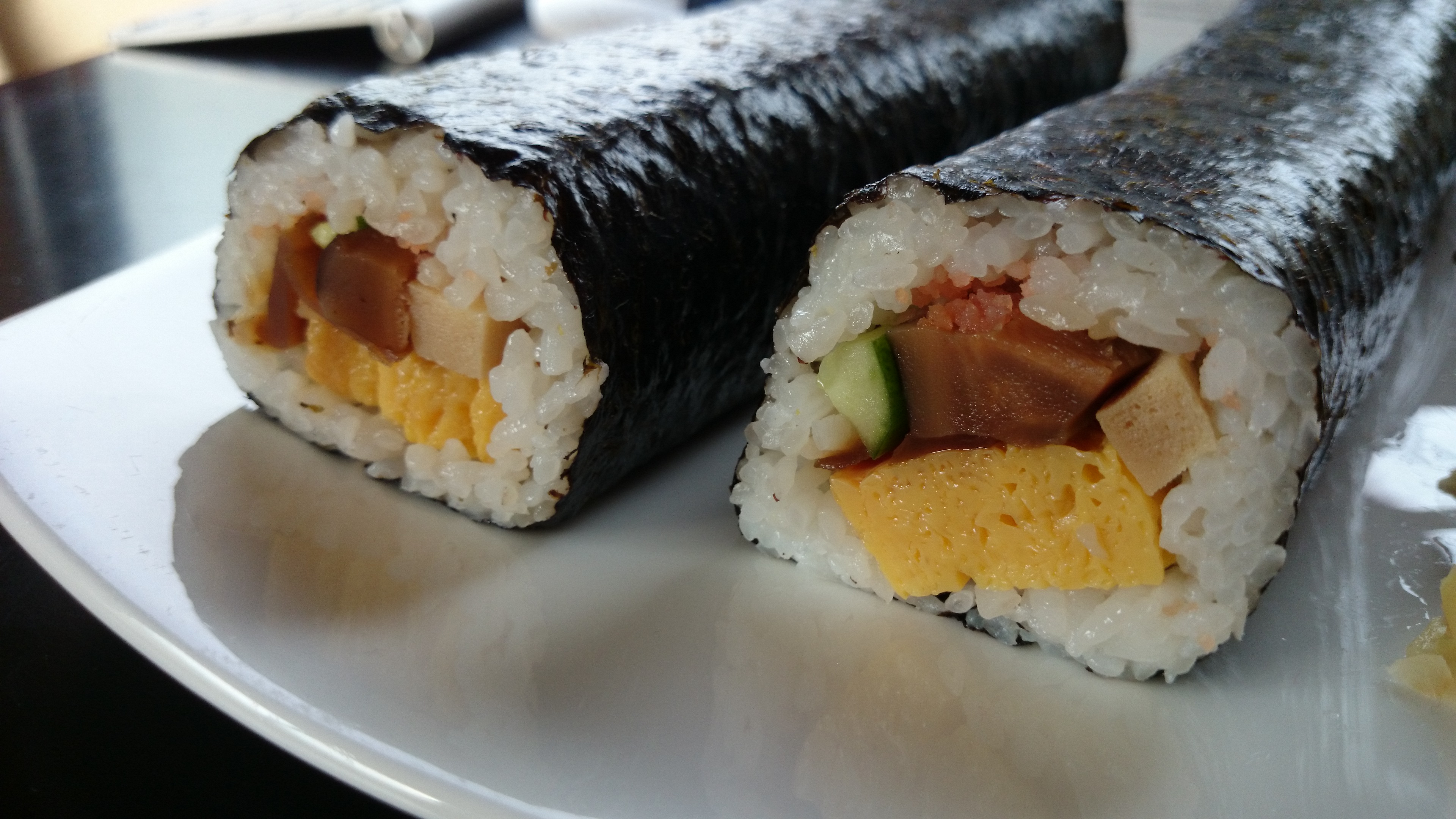
In 1998, however, convenience store chain 7-Eleven began selling the sushi rolls across the entire country, branding them ehoumaki. They have been popular even outside of Kansai ever since, with supermarkets and convenience stores selling them by the truckload every setsubun, some of them measuring up to 20cm (8 inches) in length and being twice or three times the thickness of normal makizushi rolls.
Viewed up close, these ehoumaki probably don’t look so enormous, but with an everyday object laid beside them for comparison, it’s easy to see that even these regular, store-bought rolls are absolute monsters and so heavy that they’re almost impossible to pick up with chopsticks.

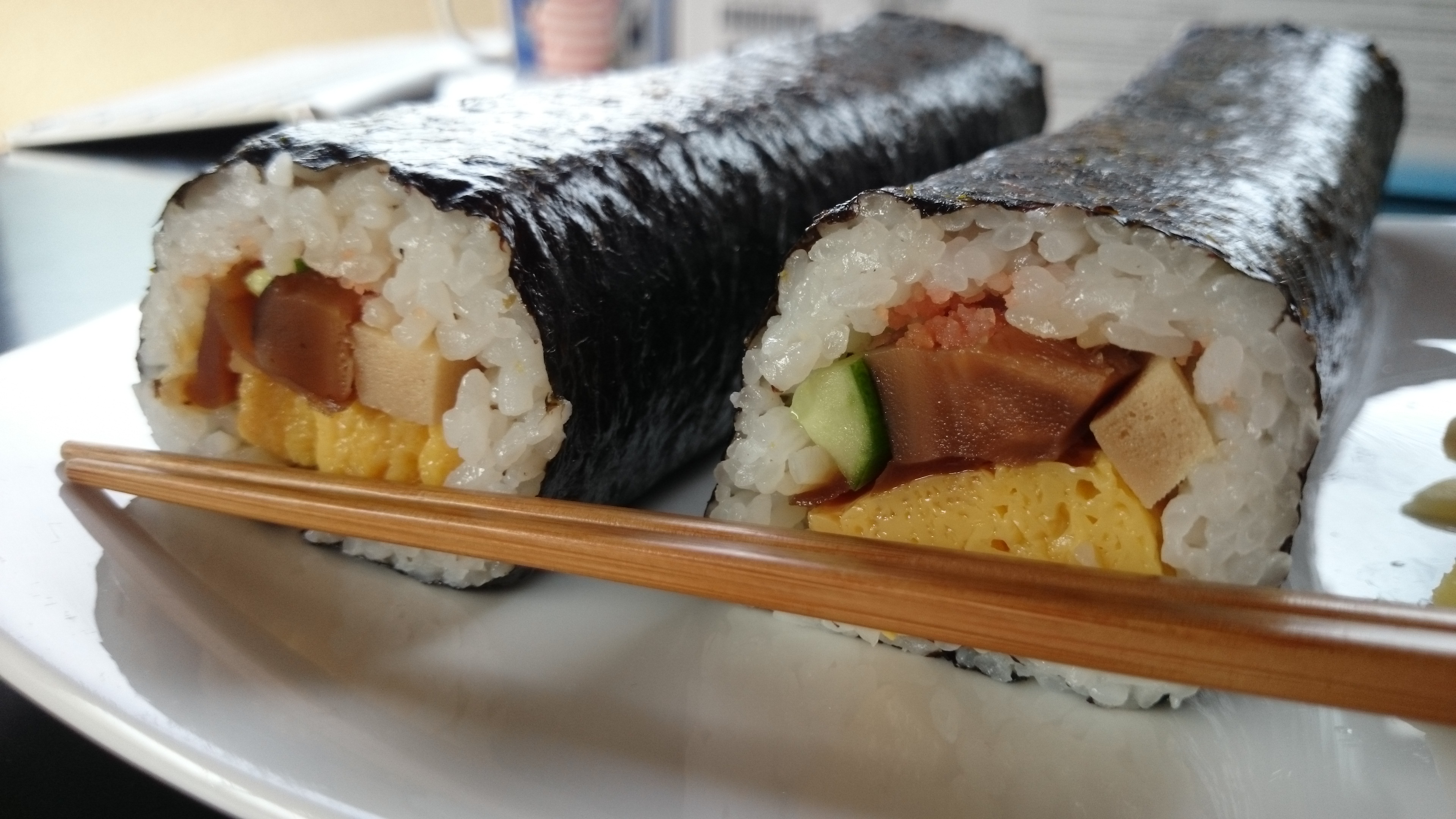
Bought from a regular supermarket, this particular pair of rolls cost 1,000 yen (US$10), and were stuffed with tamagoyaki, cucumber, denbu (dried, seasoned fish), freeze-dried tofu, shiitake mushroom, kanpyou (dried gourd shavings), and of course rice.
Besides being incredibly tasty and filling, the general idea is that eating these rolls will bring good fortune over the coming year. It also helps that, as big as they are, the rolls almost resemble the kind of poles or clubs one might use to chase a pesky demon out of the family home and end a blight of bad luck.
Depending on the region, or sometimes even individual household, there are additional traditions surrounding the eating of ehoumaki. In some parts of Osaka, for example, people make it a rule to eat their entire sushi roll with their eyes closed. In others, it’s customary to consume it all while smiling. Finally, perhaps created by tired parents who just wanted a few minutes’ peace, some people believe that one should remain silent from the moment they take their first bite of an ehoumaki until they swallow the very last grain of rice.
But whether you’re smiling, eating in the dark, or in total silence, if you want the coming year to be really, really lucky, you should pay close attention to the direction you face while eating your ehoumaki. According to the label on the ehoumaki we had earlier today, this year’s “lucky direction” is “east-north-east”, and should be faced while the eating it.
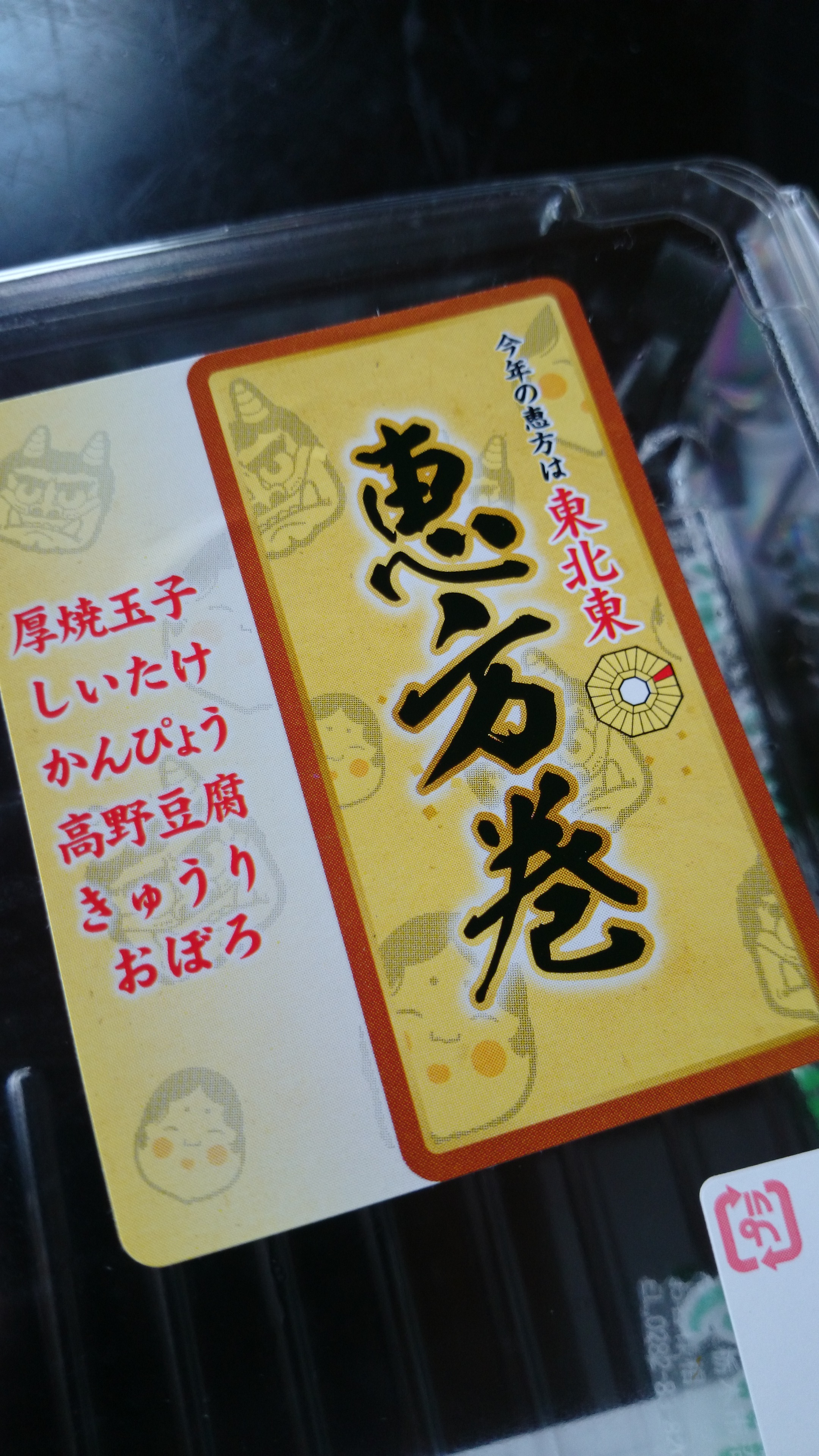
Sadly, we were too hungry to think about such things and had finished off the entire sushi roll before realising that we were probably facing in the completely wrong direction. Oh well, there’s always next year, right?
Happy Setsubun, everyone!
Photos: RocketNews24

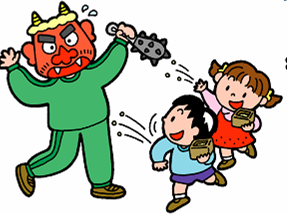
 Japanese miko shrine maidens turn into off-road racing queens in new commercial 【Video】
Japanese miko shrine maidens turn into off-road racing queens in new commercial 【Video】 Sushiro celebrates a traditional Japanese holiday with this…sushi thing
Sushiro celebrates a traditional Japanese holiday with this…sushi thing Dean & DeLuca now has fancy good luck sushi rolls to help Japan celebrate Setsubun【Photos】
Dean & DeLuca now has fancy good luck sushi rolls to help Japan celebrate Setsubun【Photos】 Subway rivals a traditional Japanese sushi roll with its own traditional Japanese BLT
Subway rivals a traditional Japanese sushi roll with its own traditional Japanese BLT Which Japanese convenience store has the best lucky sushi roll? Unclear results show clear winner
Which Japanese convenience store has the best lucky sushi roll? Unclear results show clear winner McDonald’s new Happy Meals offer up cute and practical Sanrio lifestyle goods
McDonald’s new Happy Meals offer up cute and practical Sanrio lifestyle goods All-you-can-drink Starbucks and amazing views part of Tokyo’s new 170 meter-high sky lounge
All-you-can-drink Starbucks and amazing views part of Tokyo’s new 170 meter-high sky lounge Super Nintendo World expansion gets delayed for several months at Universal Studios Japan
Super Nintendo World expansion gets delayed for several months at Universal Studios Japan Beautiful Sailor Moon manhole cover coasters being given out for free by Tokyo tourist center
Beautiful Sailor Moon manhole cover coasters being given out for free by Tokyo tourist center Kyoto’s 100 Demons yokai monster parade returns!
Kyoto’s 100 Demons yokai monster parade returns! Studio Ghibli glasses cases let anime characters keep an eye on your spectacles
Studio Ghibli glasses cases let anime characters keep an eye on your spectacles Starbucks reopens at Shibuya Scramble Crossing with new look and design concept
Starbucks reopens at Shibuya Scramble Crossing with new look and design concept More foreign tourists than ever before in history visited Japan last month
More foreign tourists than ever before in history visited Japan last month The oldest tunnel in Japan is believed to be haunted, and strange things happen when we go there
The oldest tunnel in Japan is believed to be haunted, and strange things happen when we go there Ghibli background artist Naohisa Inoue’s painting technique is out of this world
Ghibli background artist Naohisa Inoue’s painting technique is out of this world Disney princesses get official manga makeovers for Manga Princess Cafe opening in Tokyo
Disney princesses get official manga makeovers for Manga Princess Cafe opening in Tokyo Beautiful new Final Fantasy T-shirt collection on the way from Uniqlo【Photos】
Beautiful new Final Fantasy T-shirt collection on the way from Uniqlo【Photos】 Is the new Shinkansen Train Desk ticket worth it?
Is the new Shinkansen Train Desk ticket worth it? Foreign English teachers in Japan pick their favorite Japanese-language phrases【Survey】
Foreign English teachers in Japan pick their favorite Japanese-language phrases【Survey】 Japanese convenience store packs a whole bento into an onigiri rice ball
Japanese convenience store packs a whole bento into an onigiri rice ball We try out “Chan Ramen”, an underground type of ramen popular in the ramen community
We try out “Chan Ramen”, an underground type of ramen popular in the ramen community Studio Ghibli releases Kiki’s Delivery Service chocolate cake pouches in Japan
Studio Ghibli releases Kiki’s Delivery Service chocolate cake pouches in Japan Japan’s bone-breaking and record-breaking roller coaster is permanently shutting down
Japan’s bone-breaking and record-breaking roller coaster is permanently shutting down New definition of “Japanese whiskey” goes into effect to prevent fakes from fooling overseas buyers
New definition of “Japanese whiskey” goes into effect to prevent fakes from fooling overseas buyers Our Japanese reporter visits Costco in the U.S., finds super American and very Japanese things
Our Japanese reporter visits Costco in the U.S., finds super American and very Japanese things Studio Ghibli unveils Mother’s Day gift set that captures the love in My Neighbour Totoro
Studio Ghibli unveils Mother’s Day gift set that captures the love in My Neighbour Totoro Foreign passenger shoves conductor on one of the last full runs for Japan’s Thunderbird train
Foreign passenger shoves conductor on one of the last full runs for Japan’s Thunderbird train Domino’s Japan now sells…pizza ears?
Domino’s Japan now sells…pizza ears? New Japanese KitKat flavour stars Sanrio characters, including Hello Kitty
New Japanese KitKat flavour stars Sanrio characters, including Hello Kitty Kyoto creates new for-tourist buses to address overtourism with higher prices, faster rides
Kyoto creates new for-tourist buses to address overtourism with higher prices, faster rides Sales of Japan’s most convenient train ticket/shopping payment cards suspended indefinitely
Sales of Japan’s most convenient train ticket/shopping payment cards suspended indefinitely Sold-out Studio Ghibli desktop humidifiers are back so Totoro can help you through the dry season
Sold-out Studio Ghibli desktop humidifiers are back so Totoro can help you through the dry season Japanese government to make first change to romanization spelling rules since the 1950s
Japanese government to make first change to romanization spelling rules since the 1950s Ghibli founders Toshio Suzuki and Hayao Miyazaki contribute to Japanese whisky Totoro label design
Ghibli founders Toshio Suzuki and Hayao Miyazaki contribute to Japanese whisky Totoro label design Doraemon found buried at sea as scene from 1993 anime becomes real life【Photos】
Doraemon found buried at sea as scene from 1993 anime becomes real life【Photos】 Tokyo’s most famous Starbucks is closed
Tokyo’s most famous Starbucks is closed One Piece characters’ nationalities revealed, but fans have mixed opinions
One Piece characters’ nationalities revealed, but fans have mixed opinions We asked a Uniqlo employee what four things we should buy and their suggestions didn’t disappoint
We asked a Uniqlo employee what four things we should buy and their suggestions didn’t disappoint Princesses, fruits, and blacksmiths: Study reveals the 30 most unusual family names in Japan
Princesses, fruits, and blacksmiths: Study reveals the 30 most unusual family names in Japan The greatest sushi roll in Japanese history is actually nine sushi rolls in one【Photos】
The greatest sushi roll in Japanese history is actually nine sushi rolls in one【Photos】 Lucky sushi rolls coming to Kansai Aeon stores again for “Summer Setsubun”
Lucky sushi rolls coming to Kansai Aeon stores again for “Summer Setsubun” Japanese department store wishes you a good year ahead with 150 types of delicious ehomaki
Japanese department store wishes you a good year ahead with 150 types of delicious ehomaki Behold a 10,000-yen sushi roll covered in gold! 【Taste Test】
Behold a 10,000-yen sushi roll covered in gold! 【Taste Test】 Learn how to make sushi with a professional Japanese sushi chef in Tokyo
Learn how to make sushi with a professional Japanese sushi chef in Tokyo Increasing number of women leave rice behind at revolving sushi train restaurants in Japan
Increasing number of women leave rice behind at revolving sushi train restaurants in Japan Pray for sound health for your beloved pets this Setsubun with special good luck sushi rolls just for them
Pray for sound health for your beloved pets this Setsubun with special good luck sushi rolls just for them Japanese cats channel their inner demon during the chilly month of February
Japanese cats channel their inner demon during the chilly month of February Cost of uneaten ehomaki sushi rolls in 2022 estimated to be over one billion yen
Cost of uneaten ehomaki sushi rolls in 2022 estimated to be over one billion yen Sushi Wine doesn’t pair well with raw fish, but we’re still going to buy another bottle
Sushi Wine doesn’t pair well with raw fish, but we’re still going to buy another bottle Gunma’s yaki manju, unknown to most Japanese people, are the best manju we’ve ever had
Gunma’s yaki manju, unknown to most Japanese people, are the best manju we’ve ever had J-pop idol fans run amok, drop their pants at Tokyo concert
J-pop idol fans run amok, drop their pants at Tokyo concert How to make one of the most complicated but awesome themed sushi rolls【Video】
How to make one of the most complicated but awesome themed sushi rolls【Video】 Here’s what a 10,000-yen Sushi Cake from Japan looks like
Here’s what a 10,000-yen Sushi Cake from Japan looks like New sushi train toy makes sushi for you, then delivers it, and is exactly what we want【Video】
New sushi train toy makes sushi for you, then delivers it, and is exactly what we want【Video】 How to have a great meal at conveyer belt sushi chain Kura Sushi even if you hate raw fish
How to have a great meal at conveyer belt sushi chain Kura Sushi even if you hate raw fish
Leave a Reply